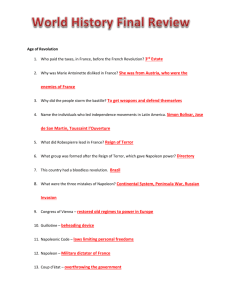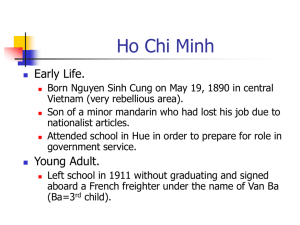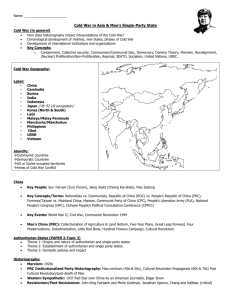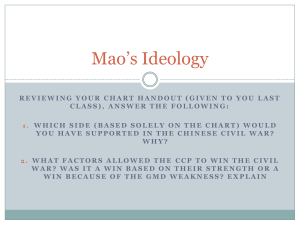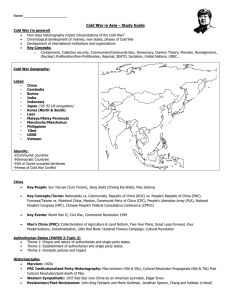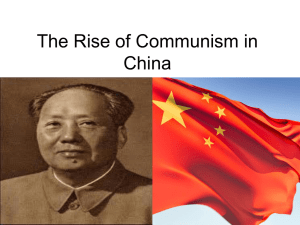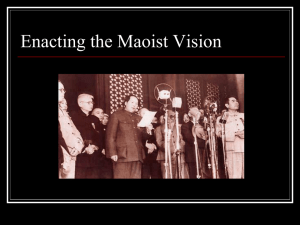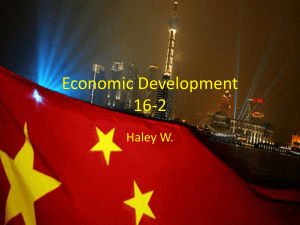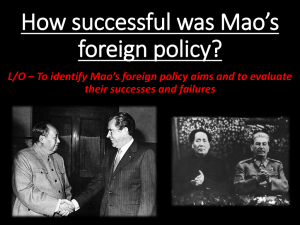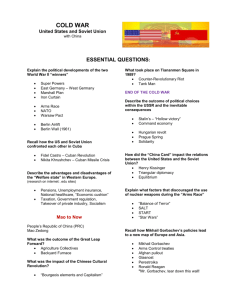Chapter 34 Guiding Questions East Asia in the Postwar Settlements
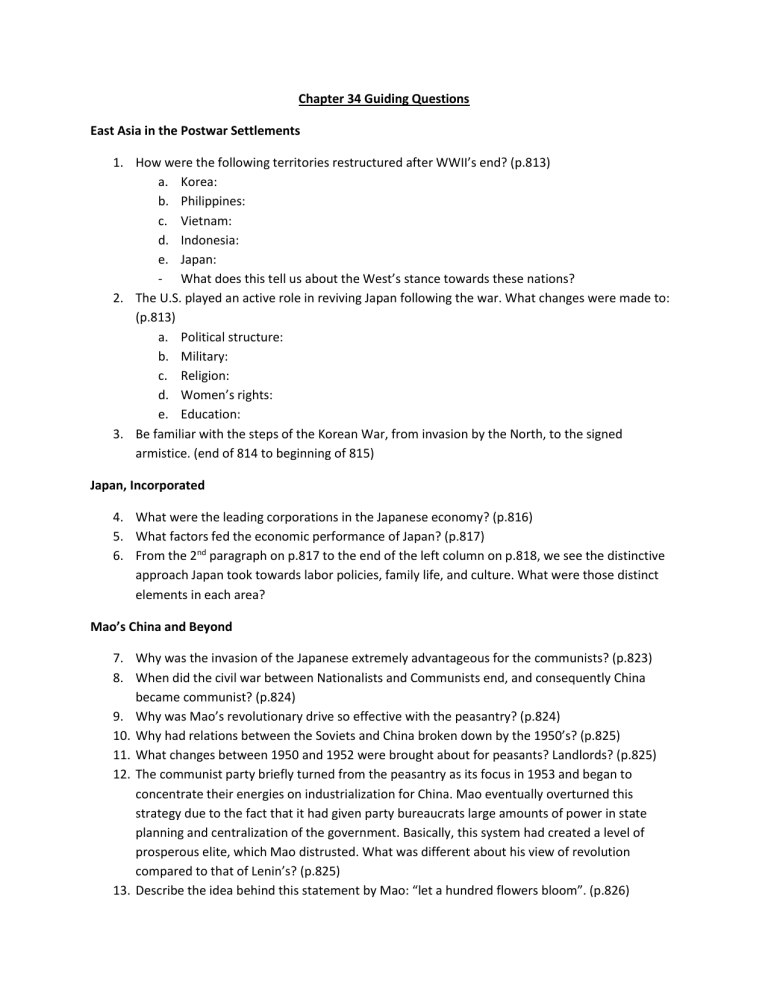
Chapter 34 Guiding Questions
East Asia in the Postwar Settlements
1.
How were the following territories restructured after WWII’s end? (p.813) a.
Korea: b.
Philippines: c.
Vietnam: d.
Indonesia: e.
Japan:
What does this tell us about the West’s stance towards these nations?
2.
The U.S. played an active role in reviving Japan following the war. What changes were made to:
(p.813) a.
Political structure: b.
Military: c.
Religion: d.
Women’s rights: e.
Education:
3.
Be familiar with the steps of the Korean War, from invasion by the North, to the signed armistice. (end of 814 to beginning of 815)
Japan, Incorporated
4.
What were the leading corporations in the Japanese economy? (p.816)
5.
What factors fed the economic performance of Japan? (p.817)
6.
From the 2 nd paragraph on p.817 to the end of the left column on p.818, we see the distinctive approach Japan took towards labor policies, family life, and culture. What were those distinct elements in each area?
Mao’s China and Beyond
7.
Why was the invasion of the Japanese extremely advantageous for the communists? (p.823)
8.
When did the civil war between Nationalists and Communists end, and consequently China became communist? (p.824)
9.
Why was Mao’s revolutionary drive so effective with the peasantry? (p.824)
10.
Why had relations between the Soviets and China broken down by the 1950’s? (p.825)
11.
What changes between 1950 and 1952 were brought about for peasants? Landlords? (p.825)
12.
The communist party briefly turned from the peasantry as its focus in 1953 and began to concentrate their energies on industrialization for China. Mao eventually overturned this strategy due to the fact that it had given party bureaucrats large amounts of power in state planning and centralization of the government. Basically, this system had created a level of prosperous elite, which Mao distrusted. What was different about his view of revolution compared to that of Lenin’s? (p.825)
13.
Describe the idea behind this statement by Mao: “let a hundred flowers bloom”. (p.826)
14.
What were the motives behind the Great Leap Forward? (p.826)
15.
Why does the author rename it the Great Leap Backward? (p. 826)
16.
What was the difference between the communist approach to women and that of the
Nationalists? (p.827 – long answer)
17.
What was the purpose behind the Cultural Revolution and what role did students play in this movement? (p. 828)
18.
What shifts have been made in China since Mao’s death in 1976? (p.829)
Colonialism and Revolution in Vietnam
19.
Behind which warring rivalry did the French throw their support in Vietnam and how were they rewarded upon victory? (p.830)
20.
The ruling dynasty in Vietnam begins to solidify Confucianism’s hold over the region. Eventually, the second emperor, Minh Ming, becomes openly hostile towards the French missionaries.
What is the French response as a result? (p.831)
21.
An increasingly growing middle class tries to lead and attempt for freedom from French rule through the Vietnamese Nationalist Party. What was the plan for gaining independence for this group? What was the result? (p.831-832)
22.
What event from Ho Chi Minh’s past had shaped his ideas about revolution? (p.832)
23.
Why were the Viet Minh able to gain so much support from the peasant classes? (p.832)
24.
After WWII, the French tried to reassert control over Vietnam. With the defeat at Dien Bien Phu, that attempt was failed. What was the significance behind this victory? (p.832-833)
25.
What made Ngo Dinh Diem an unpopular ruler in the south? (p.833)
Terms: Pacific Rim, Republic of Korea, People’s Democratic Republic of Korea, Korean War, Hong Kong,
Hyundai, People’s Republic of China, People’s Liberation Army, Mass Line, Great Leap Forward, Cultural
Revolution, Red Guard, Vietnamese Nationalist party, Communist Party of Vietnam, Viet Minh, Viet Cong

